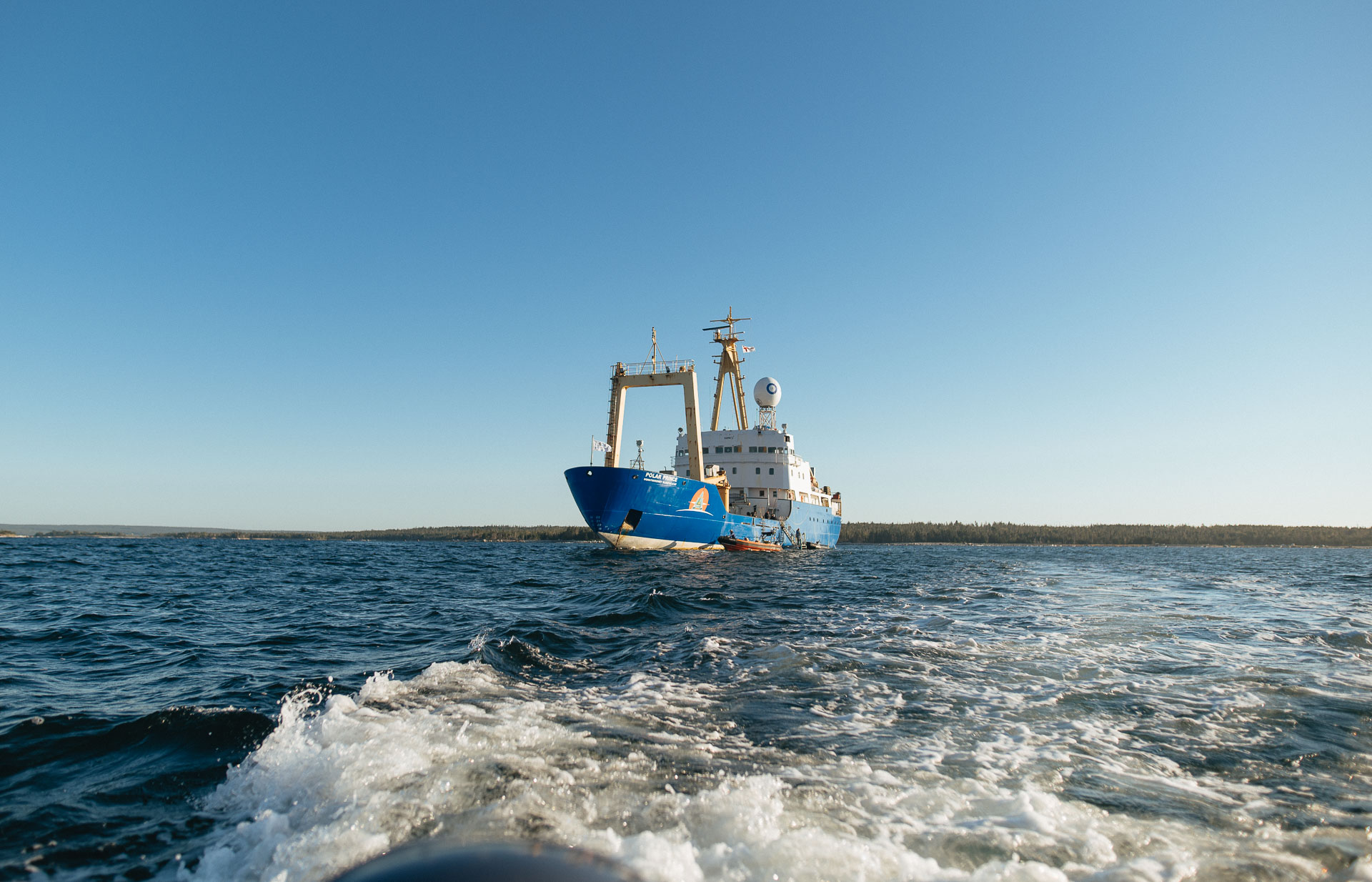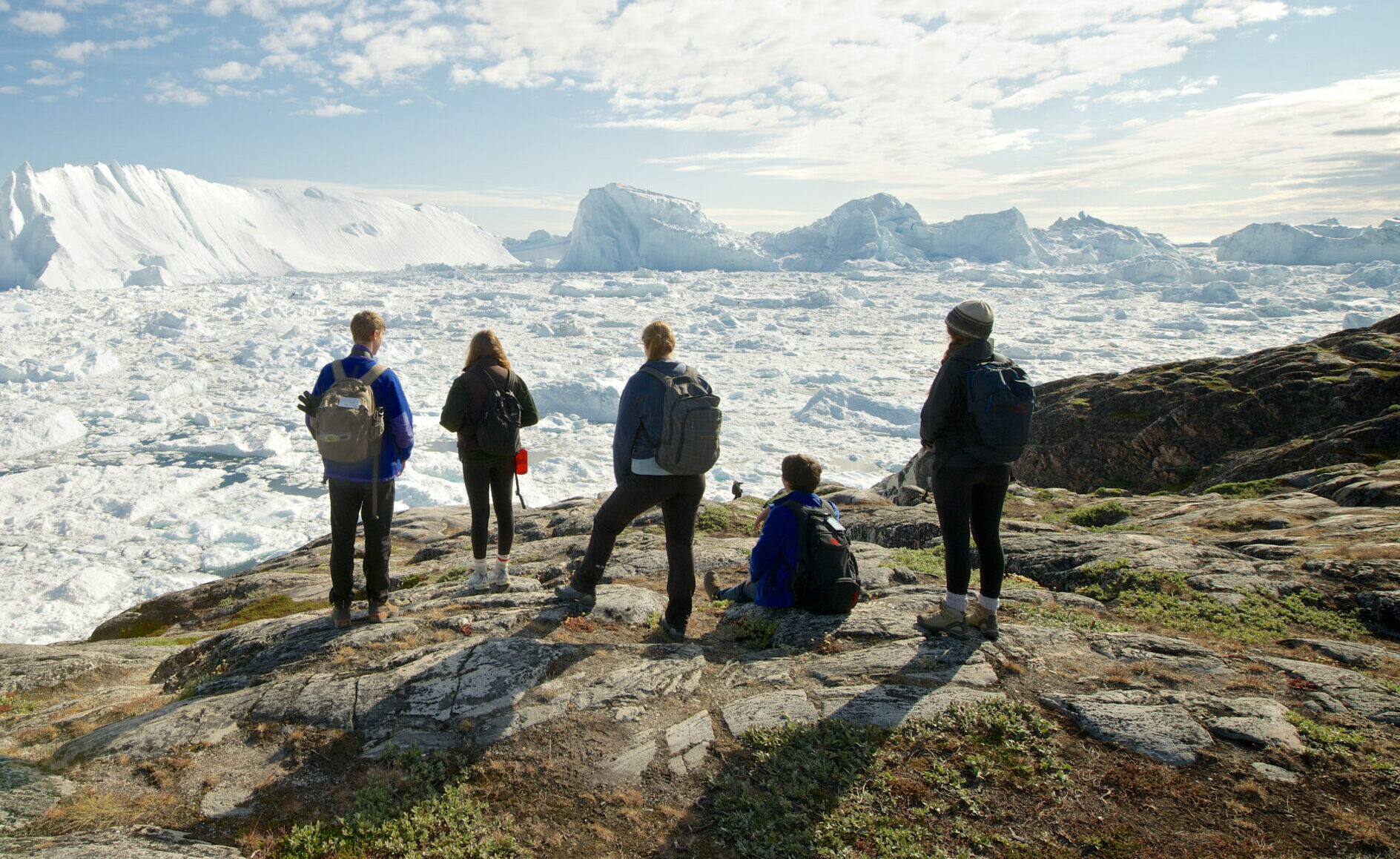Nunatsiavut to Nunavut Expedition: Full Recap
The 2024 Nunatsiavut to Nunavut Expedition provided an exceptional opportunity for SOI youth participants to connect to themselves, each other, to the natural world, and much more! Being out on the land and the ocean each day offered powerful experiences, including breathtaking landscapes, encounters with wildlife, and meaningful cultural exchanges, which fostered a strong spirit of learning, community, and self-discovery.
“At the beginning of the expedition, my goal was to unplug. I’m glad I did. It felt so good to disconnect from the negativity of the internet. That’s why I felt so connected with my new friends on the ship. When I got home, catching up on the internet felt like a chore—I just wanted to be back with my expedition family.”
– Colm Kingmiaqtuq-Devlin, Inuvik, NT

The expedition itinerary spanned two regions of Inuit Nunangat, the collective term for the lands, waters, and ice that make up the traditional Inuit homeland in Canada. Our 15-day journey began in Ottawa, continuing through Montreal, Happy Valley-Goose Bay, and Nain, Nunatsiavut where we boarded the expedition icebreaker Oqwatnukewey Eleke’wi’ji’jit (MV Polar Prince). We sailed north to the awe-inspiring Torngat Mountains National Park and onwards to Baffin Island, with our final landing in Iqaluit, Nunavut. Covering more than 1,000 nautical miles, we made 12 shore landings and several zodiac tours.
Our expedition, endorsed as an official action of the United Nations Ocean Decade, brought together 22 youth, aged 14-18, and a team of 21 educators, including Indigenous Elders, researchers, artists, and media professionals. The experience allowed participants to connect in so many valuable ways. Immersing ourselves in nature, we travelled together on a transformative ocean journey filled with meaningful moments, experiences, and learnings.

“My decision to join the SOI expedition was driven by the chance to… observe iconic wildlife like polar bears and walruses, delve into the complexities of climate change, and forge meaningful relationships with fellow participants.”
– Jolene Smith, Tsartlip First Nation
Representing different countries, the diverse youth participants brought their unique perspectives and experiences together to form our expedition family. Seventy-five percent of the youth were Indigenous: 45% Inuit from the four regions of Inuit Nunangat (Nunavik, Nunatsiavut, Nunavut, and the Inuvialuit Settlement Region), and 30% from First Nations in British Columbia, Quebec, and Labrador, including Dzawada̱ʼenux̱w First Nation, Innu Nation, Kitigan Zibi Anishinabeg First Nation, ʼNa̱mǥis First Nation, Tsartlip First Nation, and Wet’suwet’en First Nation.
For Claire Willie from Alert Bay, B.C., it was her first time travelling outside her home province. Naturally anxious, she shared, “When I first arrived in Ottawa, I was very scared. I didn’t say a word because I’ve never been anywhere but British Columbia. Once we got together with everyone, everything was so nice and welcoming. It wasn’t scary anymore.”

Our expedition focused on themes such as culture and history, offering youth rich and immersive educational experiences. SOI educators and Elders shared personal stories, historical anecdotes, and cultural knowledge, connecting us deeply to the places we visited. Youth participants were particularly moved by the Elders’ personal stories, which, while often painful to recount, made the connections to each other and the land and sea even more profound.
We engaged in culinary traditions like making bannock, participating in a boil-up with freshly caught Arctic Char, and prepared pitsik (fish scored, salted, and dried in the fresh air). We brewed tea using local flora and fresh water from nearby streams. Traditional activities like fishing, beading, and crafting provided insights into how modern Indigenous practices reflect historical influences and local resources. We were treated to throat singing, music, and storytelling, with Elders performing ceremonies like lighting the qulliq (traditional oil lamp), giving us time to reflect on each day’s experiences. One particularly moving moment was the Nain Brass Band’s performance—integral to Northern Labrador’s history, adapted by Inuit from the Moravian missions years ago.

We were provided insights into the region’s history through visits to Hebron and numerous archaeological sites, helping us understand the events and people that impacted and shaped the region over hundreds of years. Each day on the expedition deepened our understanding of the connections between people, land, and water.

“Spending time with the Elders made the trip’s impact and meaning hit so much harder. We saw proof of cultural resilience through the knowledge they shared, such as lighting the qulliq and learning to live from the land. These traditions may have modern alternatives, but they remain important to know.”
– Keely Nicholson, Ottawa, ON
From the microcosm of single-cell algae to the macrocosm of the Northern Lights in the night sky, our expedition showcased the wonder, exhilaration, and respect for nature in all its forms. The themes of biodiversity and ocean conservation underscored much of the journey, from data gathering and water monitoring to encounters with Arctic species like polar bears and walruses. It all culminated to highlight the importance of marine biodiversity and ocean stewardship.
Our floating classroom buzzed with activity every day. Participants explored marine biodiversity through environmental DNA (eDNA) sampling, hiked through picturesque coastal areas, and cruised in zodiacs among towering icebergs. Hands-on workshops with Indigenous Elders and conservation experts deepened our connection to marine protection and coastal ecosystems.

“The wildlife encounters were life-changing. I never thought I’d see polar bears or walruses so close. The workshops were brilliant—I learned to edit photos, throat sing, and fish. The water sampling showed us how much [life] is in the ocean, which was eye-opening.”
– Diamond Pierre, Tsartlip First Nation
These activities and experiences provided us with a multifaceted understanding of how biodiversity is interconnected with ocean conservation, highlighting the complex relationships between species, habitats, and human activities.
As we concluded the 2024 SOI Expedition, we reflected on the incredible journey we had experienced together.Along the way, our group of youth and educators bonded over shared discoveries and their connection to the land and each other. Not to mention all the fun and the laughter!

“These experiences have totally changed my life. Since I’ve been home, I’m more social, spend less time on my phone, and feel much happier. I’ve learned to enjoy every moment because everything is beautiful in its own way—you just have to take a second to find it.”
– Sam Lane, Makkovik, NL
Sam’s sentiment echoes the personal growth, connections, knowledge, and profound experiences gained by these amazing youth through this expedition. Experiences that will undoubtedly help shape them on their life journeys ahead…
Nakurmiik (thank you in Inuktitut).





